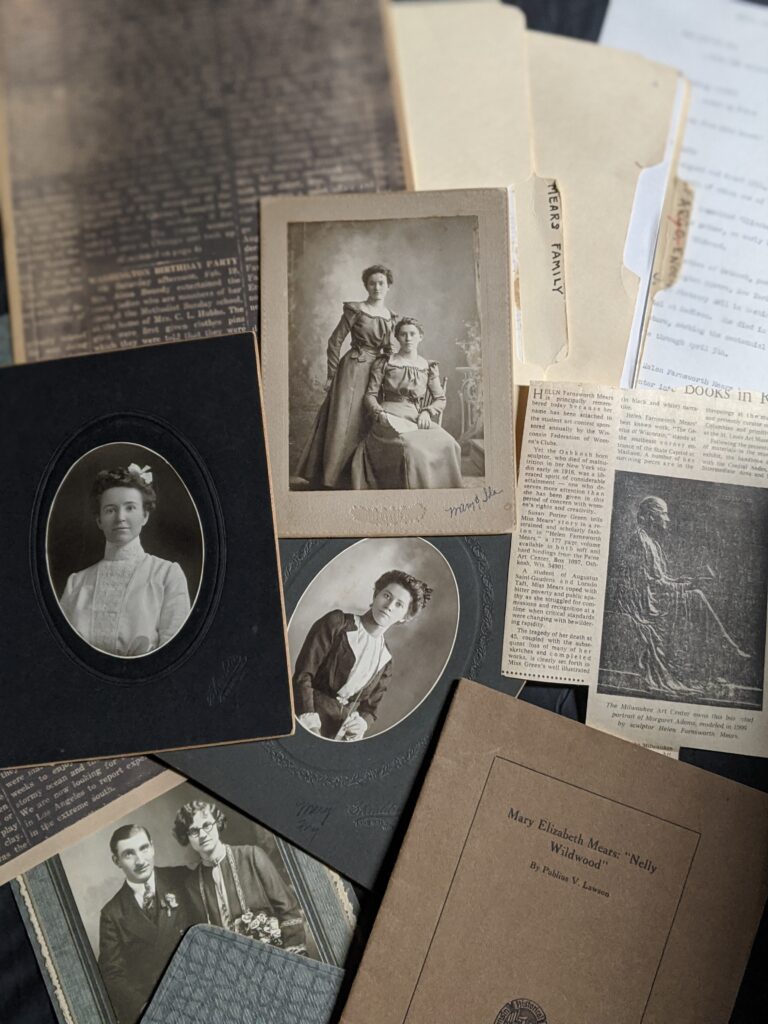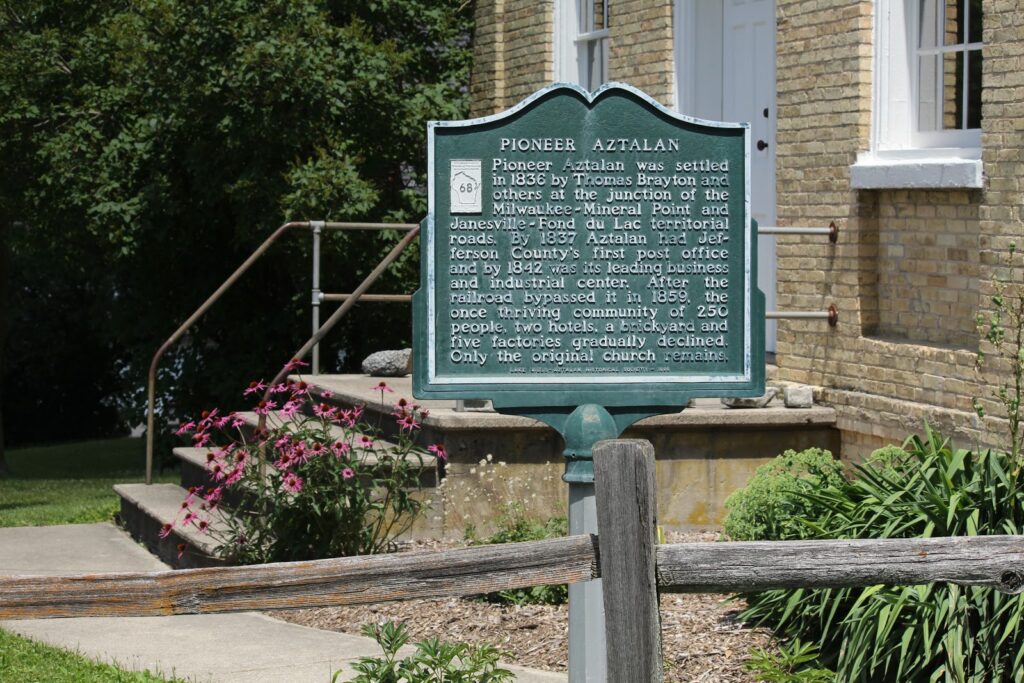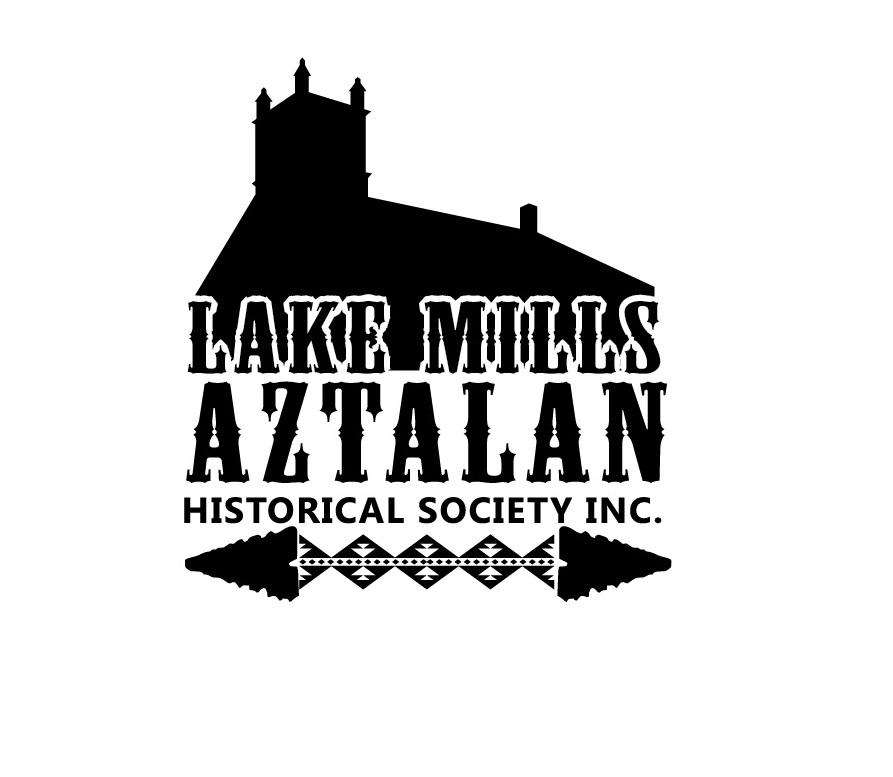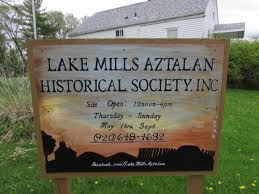Located in Lake Mills, Wisconsin, the Lake Mills Aztalan Historical Society (the Museum) is dedicated to preserving and sharing local pioneer and ancient Native American history. The Museum site opened in 1942, a year after the Society was founded. The Museum comprises seven pioneer buildings including the 1852 Baptist Church which houses the Society’s artifact and relics collections. Robin Untz serves as the Museum Board president and curator.
Digitization beginnings, a few challenges and a plan
When Untz was appointed Board president in 2013, she inherited an organization on the verge of closure, physical collections housed in multiple locations, digitized images held by external vendors and organizations, and a very supportive volunteer Board many of whom were unaware of these challenges. The physical collections were (and still are) housed in the 1852 Baptist church, the L.D. Fargo Public Library and temporarily in Untz’s home office, a space used for processing collections. Select historical images from the Museum’s collections were digitized for publication in community brochures in 2006 by an intern from the Main Street Program. The digital archival images were not returned to the Museum. They were shared with numerous people and organizations over the years, leaving the Museum with little or no intellectual control over this content. As a result, some images of Native American burial grounds with visible remains were used without authorization or consultation with tribal authorities. At present, the Museum has an informal agreement with a local marketing organization to digitize images from the collection to be used on merchandise and return 30% of the sales to the Museum.
Early in her role, Untz facilitated the return of the digitized archival images from the Main Street Program coordinator and initiated an important partnership with the local marketing organization to continue digitizing images. She also revitalized Museum Board and community participation, and used the revenue from the digitized images to help reopen the Museum site.
In 2019, Untz and the Lake Mills – Aztalan Historical Society participated in Recollection Wisconsin’s Curating Community Digital Collections (CCDC), an IMLS-funded program designed to provide practical experience in digital stewardship and increase the capacity of small libraries and cultural heritage organizations to curate their digital collections. Untz and her student intern quickly realized that without dedicated workspace or equipment, initiating a digital preservation project would be difficult. Instead, they took a step back and a more holistic approach, focusing on creating an accurate inventory of digitized content, organizing and renaming digital files, and documenting and implementing digitization best practices. Their experience may ring familiar for other small or under-resourced cultural heritage organizations. Without adequate experience, training or equipment, starting any digital initiative can be a daunting prospect.
Digital readiness and planning is key
Participation in CCDC and desire to connect with other local history practitioners inspired Untz to join Recollection Wisconsin’s Digital Readiness Community of Practice, an NHPRC-funded project envisioned to provide resources and support, and build community for local history organizations engaged in digital projects. Untz shared her valuable insight working with the Museum and their digital collections as part of the planning grant project. Currently a member of the implementation grant project’s Launch Committee, Untz’s main goals for participation are to help build and share with her Board members and volunteers, a network of contacts and resources to support their ongoing digital work.
“I want people to know they don’t always have to come to me for the answers; it’s about empowering others to participate in this work too.”
Robin Untz, Lake Mills Aztalan Historical Society
The Museum Board president is a volunteer position. In this role, Untz is keenly aware of the need for consistent and sustainable leadership. Having inherited minimal documentation from previous Museum volunteers and the Board, she hopes to disseminate knowledge of their digital work across the organization. Increasing learning opportunities for volunteers will empower them to more fully engage with digital collections projects. Access to a wider network of practitioners and training materials will help their organization recruit, engage and hopefully retain skilled volunteers, and provide digital project work based on their abilities and interests. Computer-savvy volunteers might scan photos while others with keen organizational skills might focus on arranging and describing photographs in preparation for digitization.
“I’m in it for the long haul…I’m not going anywhere, but still, we don’t live forever. I learned a long time ago that that’s how the world turns: you can’t assume you’re going to be in the position forever, so you have to be getting it ready for the next people.”
Robin Untz, Lake Mills Aztalan Historical Society
Untz has also prioritized documenting organizational decisions and procedures. When their Main Street program intern wrapped up digitization work in 2006, they did not share project documentation with the Museum. This impacted project continuity, specifically her ability to quickly and easily locate their digital files. It’s important to take time to create documentation throughout each stage of a digital project. Creating and sharing project plans and key decisions, workflows, file-naming standards, and/or file storage plans may help future staff and volunteers understand past decisions and continue the work with greater ease.

Untz also hopes that participation in the Digital Readiness Community of Practice will encourage Museum Board members and volunteers to gain knowledge and initiate future digital preservation projects. Engaged and knowledgeable volunteers will not only help sustain and provide continuity for their digital project work but increase awareness of the Museum and its work within the larger Lake Mills community. As Untz has formed her own network of colleagues with whom she consults, she hopes the Museum’s Board and volunteers will enjoy similar support.
“Digital content is really going to be what helps us survive as small historical societies. The more we put that content out there to intrigue people, the more they’re going to say, “Oh hey, these people still exist! Hey, we can go see these things in person!”
Robin Untz, Lake Mills Aztalan Historical Society
Digitization initiatives provide valuable content and new ways of engaging visitors, especially for patrons who are unable to visit those locations in person and students and educators participating in virtual learning.
What’s next?
Funded by the Wisconsin Department of Public Instruction and in partnership with Wisconsin’s South Central Library System (SCLS), Recollection Wisconsin offers digitization kits through public libraries. These kits include a basic flatbed scanner and other equipment for scanning two-dimensional photos and documents. Untz and the Museum plan to utilize one of the kits, borrowed through the L.D. Fargo Public Library, to continue digitizing their own materials. They also have a new volunteer who is completing an internship with the Museum and will be digitizing, naming and organizing files according to the procedures designed during the CCDC project. Other goals include creating a collection development policy for the Museum and a memorandum of understanding with the retail vendor digitizing their photos.
“This can get overwhelming; people have to realize that baby steps are still steps forward.”
Robin Untz, Lake Mills Aztalan Historical Society
Final thoughts
- The initial planning stage of any digitization project should always include figuring out where previous projects may have left off by connecting with past project leaders and volunteers, tracking down project documentation, and locating the digital files.
- Digitization projects serve many purposes, including creating digital content to increase online engagement but also an opportunity to build community engagement around shared local history.
- Planning for future projects means empowering others to learn and participate in digital work so they are ready to step in and take the lead.
- Untz’s experience leading the Museum in a volunteer capacity is a good reminder that this work takes time and is never finished but always worth it. Incremental progress is still progress.
Just the highlights? Download the Museum’s Digital Readiness Case Study in Brief (PDF).
Our sincere thanks to Lake Mills – Aztalan Historical Society and Robin Untz for sharing their experience with our digital readiness community of practice!
This work is funded through an Archives Collaboratives Implementation Grant from the National Historical Publications and Records Commission (NHPRC), the granting arm of the National Archives. Visit Digital Readiness Community of Practice for more information.






You must be logged in to post a comment.